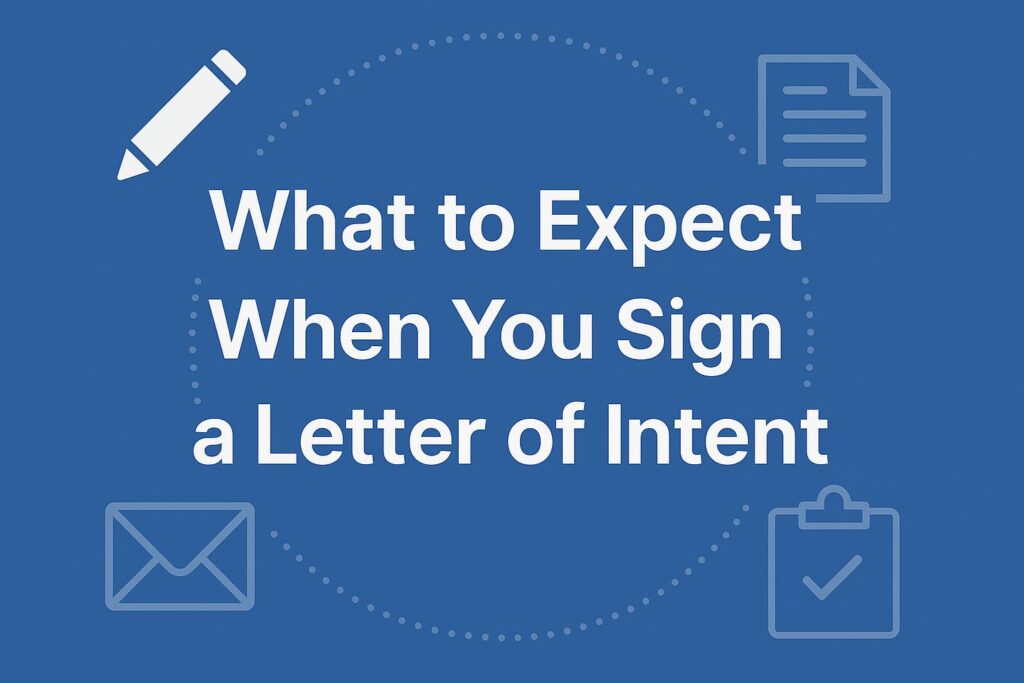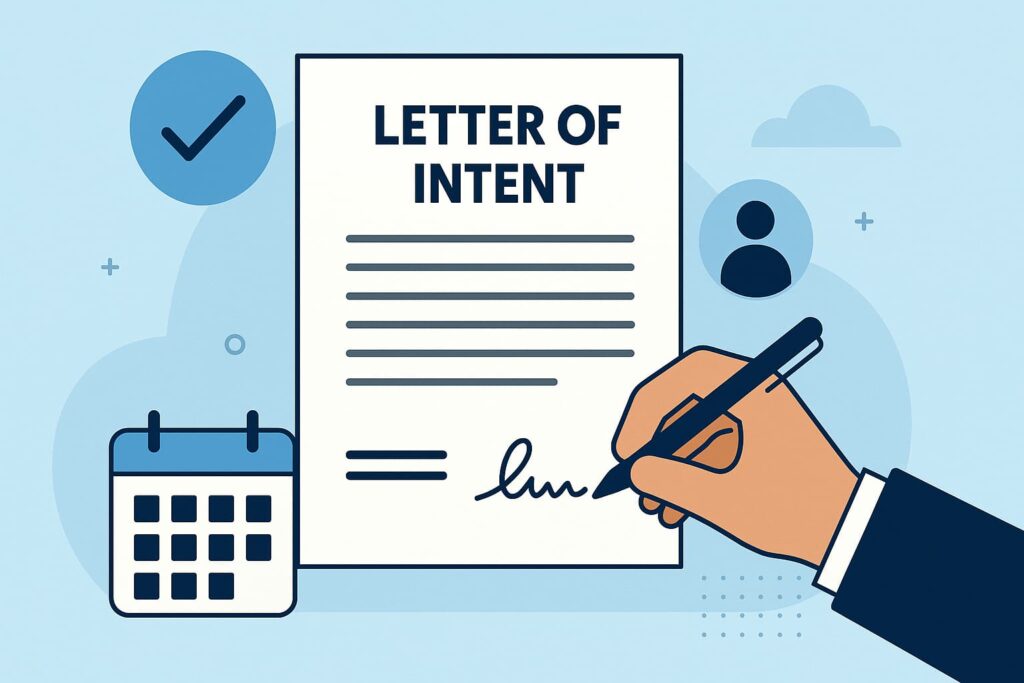If you are planning to acquire a tech startup or any business, signing a Letter of Intent (LOI) is the first formal step. It sets the framework for the deal and shows both parties are serious. But this is just the beginning, and before finalising the acquisition, these are the basic steps that you need to consider. After this, a series of critical actions begin.
Let us break it down into clear steps, especially from the tech acquisition point of view.

What is a Letter of Intent (LOI) in M&A?
A Letter of Intent is a non-binding agreement that outlines the basic terms of the proposed acquisition. It usually includes:
| Key Element | What it Means in Tech M&A Context |
|---|---|
| Purchase Price | Expected range based on current valuation and past revenue |
| Deal Structure | Cash, equity, earn-outs, or a mix |
| Exclusivity Period | Buyers can explore the deal without competition for a fixed time |
| Timeline | Deadlines for due diligence and agreement signing |
| Confidentiality | NDA clauses for sensitive product, codebase, and customer data |
Step 1: Conducting Due Diligence
Once the LOI is signed, Due Diligence begins. This is like a full-body checkup of the company.
Key Areas in Tech Acquisitions
- Financial Review
- Balance sheet, profit/loss, burn rate, and runway
- Revenue from SaaS, subscriptions, or app downloads
- Product & Code Audit
- Codebase quality, version control (Git), technical debt
- Scalability, uptime records, and past tech stack decisions
- Legal Compliance
- License of tools (e.g., open-source usage), GDPR, local laws
- IP ownership verification
- HR & Team Assessment
- Employee contracts, ESOPS, and key personnel retention risks
- Skillset mapping and remote/distributed team management
- Customer & Market Position
- Active user base, CAC, LTV, churn rate
- Industry positioning and top competitors

Step 2: Negotiating the Purchase Agreement
You have to draft the intent to purchase agreement right after the due diligence. Basically, it is a legally binding document with a detailed aspect of:
Main Components
| Term | Meaning in Tech Deals |
|---|---|
| Final Purchase Price | Adjusted based on due diligence findings |
| Representations & Warranties | Seller confirms IP ownership, financial accuracy, and no lawsuits pending |
| Indemnification Clauses | Buyer gets protection from past legal or tax issues |
| Covenants | Non-compete, employee retention, NDA continuation post-acquisition |
This document is legally enforceable and finalises the terms of the deal.
Step 3: Securing Financing for the Acquisition
You may need funds to close the deal. These are the common funding types in a tech business buyout:
| Financing Type | Description | Common In |
|---|---|---|
| Debt | Loans from banks or fintech lenders based on revenue or assets | B2B SaaS |
| Equity | Raising money from VCs or angel investors | Startups |
| Hybrid | Mix of debt and equity | Mid-size firms |
You should present a detailed business plan with:
- Future revenue forecast
- Integration plan post-acquisition
- Tech roadmap and user growth model
Step 4: Regulatory and Closing Approvals
Before final execution, both sides must meet legal and compliance conditions.
Tech-Specific Approval Needs
- Data Compliance: GDPR/CCPA compliance if user data is involved
- Cybersecurity Check: Past breaches or vulnerabilities must be cleared
- Antitrust: Approval from authorities if the acquisition affects competition
- Third-Party Consents: API or platform dependencies like AWS, Stripe, Firebase
Final Step: Deal Closure and Ownership Transfer
Once everything is approved:
- The final agreement is signed
- Payment and fund transfer are done
- Ownership (shares, control, IP) is transferred
- Employees and customers are informed
- Integration phase starts (tools, logins, team, systems)
Pro Tip: Use M&A Management Tools
To make this process smooth, here are some tools you can use:
| Tool Name | Purpose |
|---|---|
| Carta | Cap table and equity management |
| DocuSign | Digital signature of the LOI and agreements |
| DataRoomHQ | Secure data room for due diligence docs |
| Asana/Trello | Task tracking across legal, finance, and HR |
Final Thoughts
When you buy a company in 2025, you should know it is no longer just about money. It is about reading the hidden codes behind the tech, people, and systems. If you are stepping into an acquisition, then get help from legal experts, tech auditors, and financial planners.
And remember, a well-structured LOI is not the end; it is just the beginning of a smart, safe, and successful ownership shift.
Remember, a well-structured LOI is not the end; it is just the beginning of a smart, safe, and successful ownership shift.